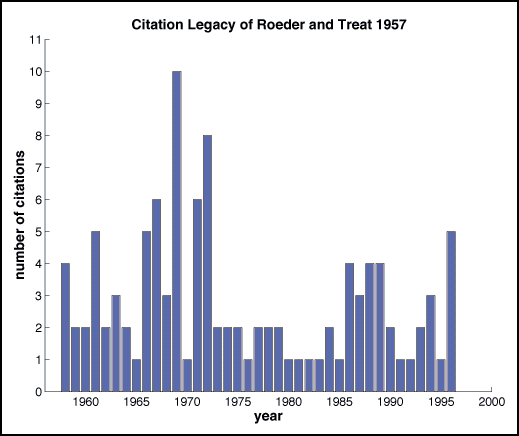

During the 1950's, Kenneth Roeder and his colleagues studied the evasive behavior of moths in response to ultrasonic pulses emitted by their predators -- echolocating bats. This 1957 classic paper firmly established that the tympanal organs of noctuid moths are specifically tuned to the ultrasonic signals used by bats, and in the process, initiated a field of research to determine the neural mechanisms that mediate this evasive behavior. Since 1957, this paper has been referenced 111 times, for an average of about 4 times per year. As shown in the figure, there was a burst of activity in the late 1960's that can be attributed to 2 factors. First, in 1963, Roeder published his now famous book, Nerve Cells and Insect Behavior, which reached a large audience and spurred scientific interest in the moth auditory system. Second, advances in the technology of extracellular single unit recording allowed many labs to begin pursuing the central processing mechanisms involved in the escape response. Research interest in the area faded during the 1970's, but picked up again during the mid 1980's, again driven by advances in technology. Many groups, most notably the group lead by G.S. Boyan, have been recording intracellularly from identified interneurons and examining both their morphological and physiological characteristics. There is still a great deal left to be learned about the central auditory processing mechanisms of noctuid moths, but from the burst of activity in 1996 (5 citations by September), it appears that we are beginning an exciting time in the study of these interesting animals.
